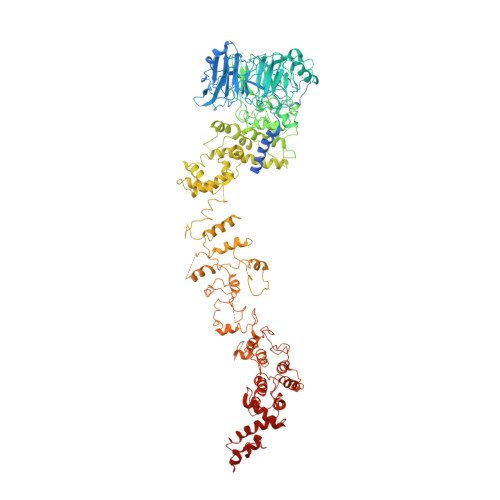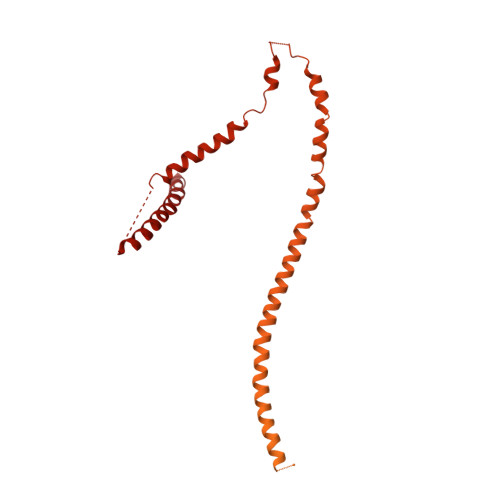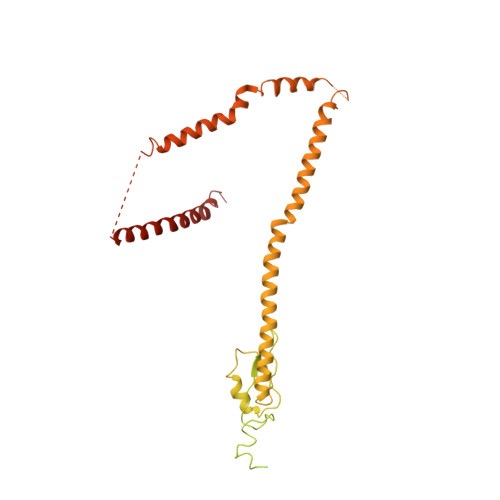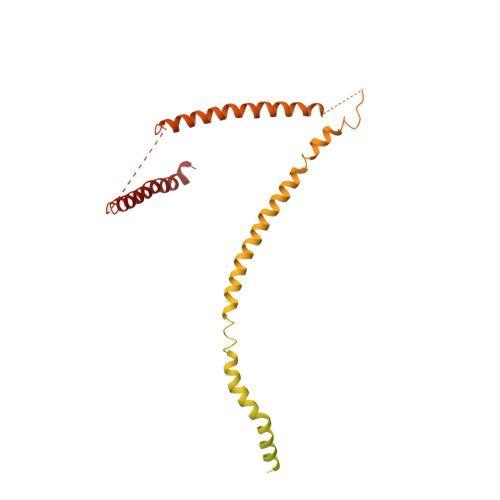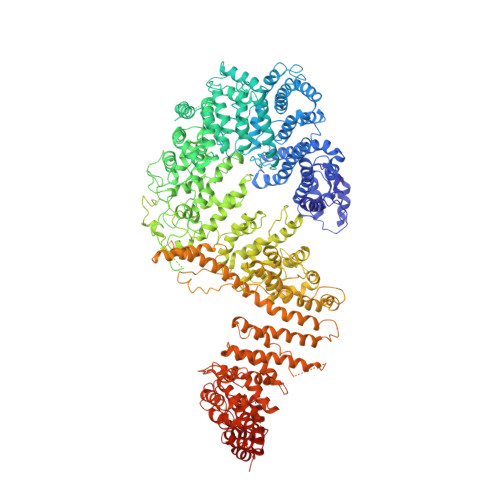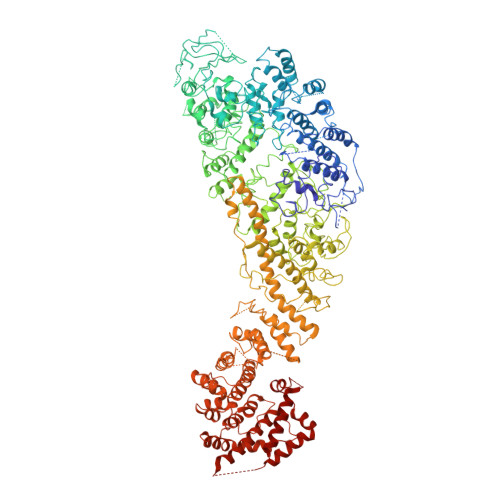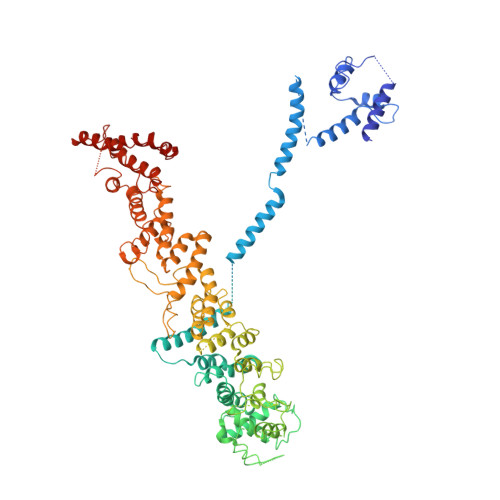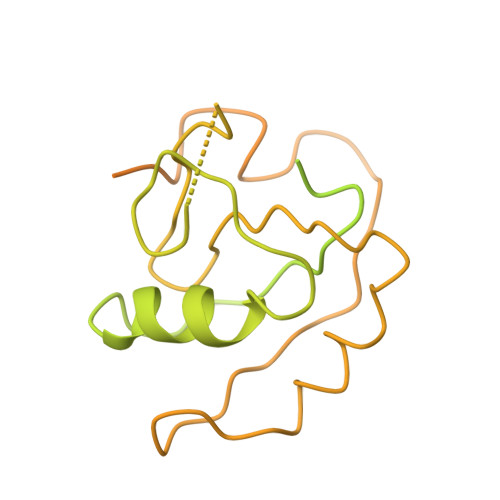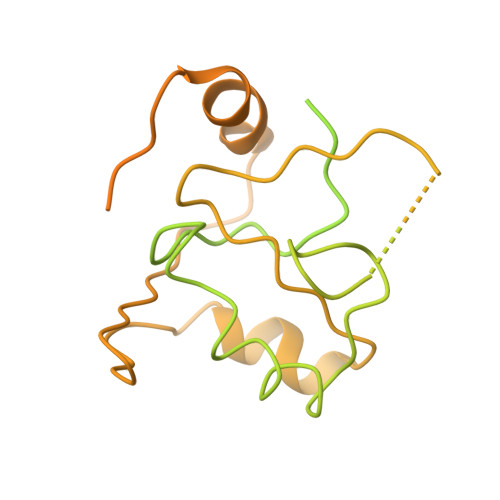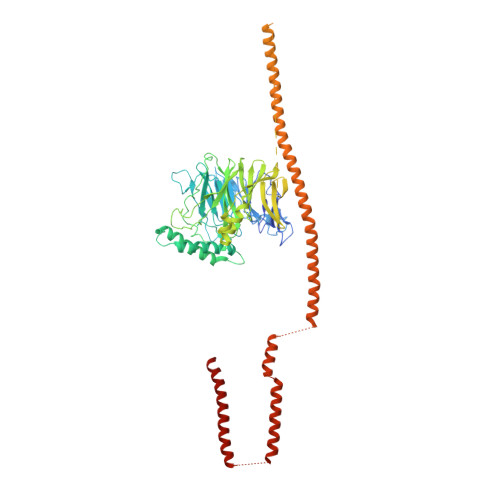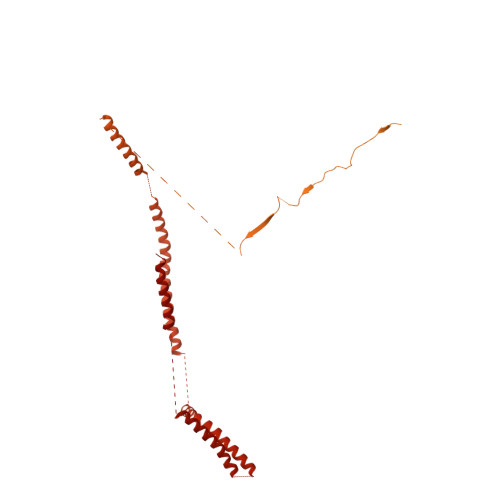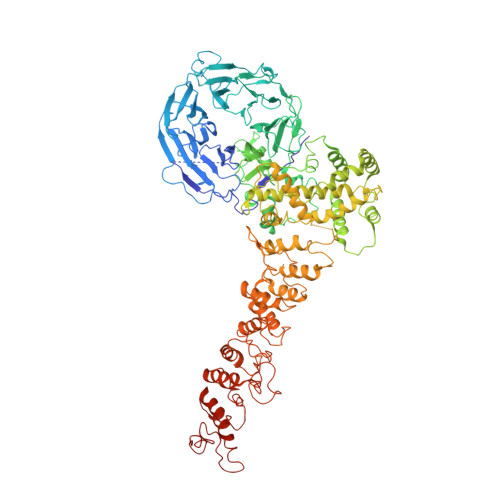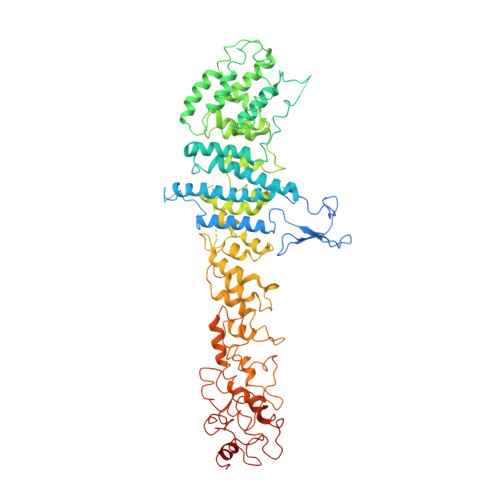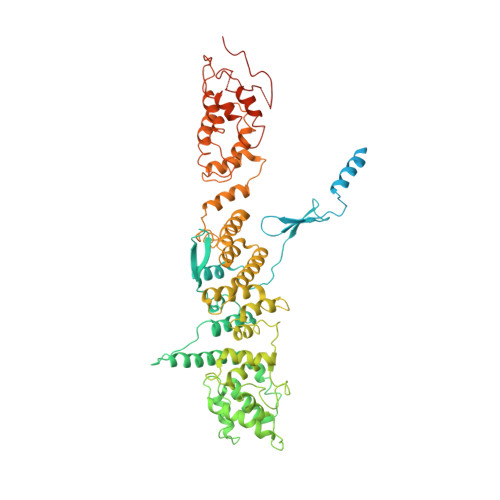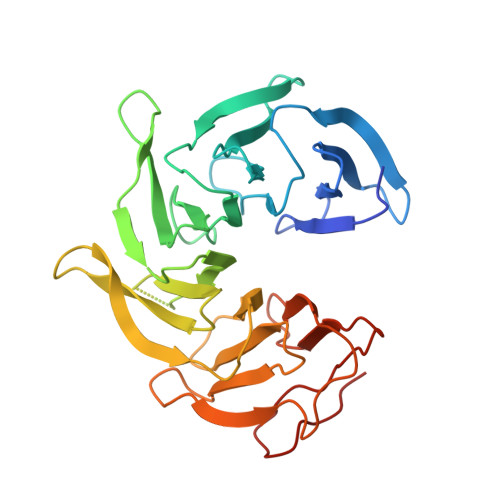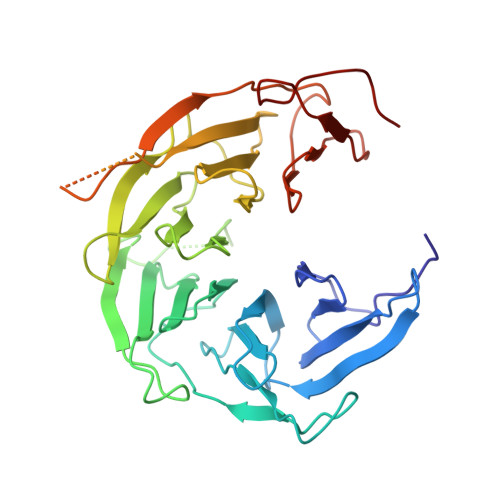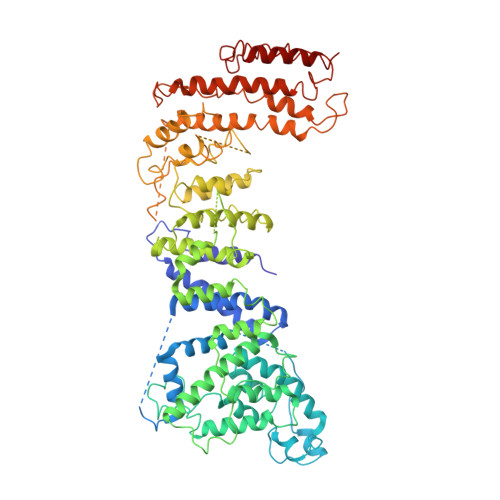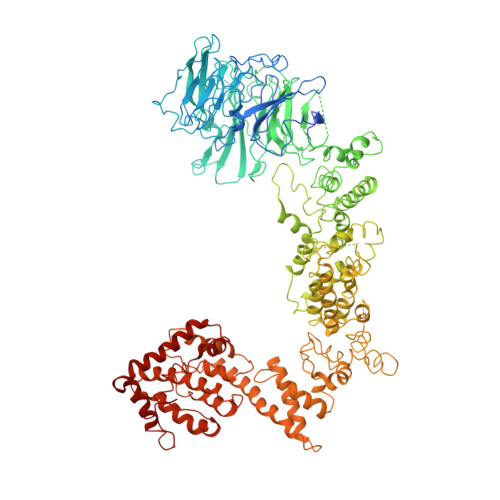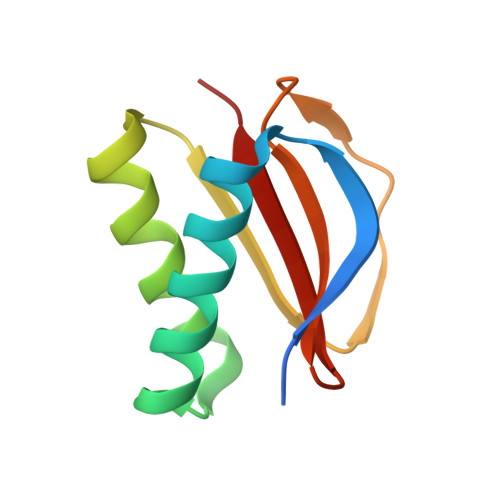Comprehensive structure and functional adaptations of the yeast nuclear pore complex.
Akey, C.W., Singh, D., Ouch, C., Echeverria, I., Nudelman, I., Varberg, J.M., Yu, Z., Fang, F., Shi, Y., Wang, J., Salzberg, D., Song, K., Xu, C., Gumbart, J.C., Suslov, S., Unruh, J., Jaspersen, S.L., Chait, B.T., Sali, A., Fernandez-Martinez, J., Ludtke, S.J., Villa, E., Rout, M.P.(2022) Cell 185: 361-378.e25
- PubMed: 34982960
- DOI: https://doi.org/10.1016/j.cell.2021.12.015
- Primary Citation of Related Structures:
7N84, 7N85, 7N9F - PubMed Abstract:
Nuclear pore complexes (NPCs) mediate the nucleocytoplasmic transport of macromolecules. Here we provide a structure of the isolated yeast NPC in which the inner ring is resolved by cryo-EM at sub-nanometer resolution to show how flexible connectors tie together different structural and functional layers. These connectors may be targets for phosphorylation and regulated disassembly in cells with an open mitosis. Moreover, some nucleoporin pairs and transport factors have similar interaction motifs, which suggests an evolutionary and mechanistic link between assembly and transport. We provide evidence for three major NPC variants that may foreshadow functional specializations at the nuclear periphery. Cryo-electron tomography extended these studies, providing a model of the in situ NPC with a radially expanded inner ring. Our comprehensive model reveals features of the nuclear basket and central transporter, suggests a role for the lumenal Pom152 ring in restricting dilation, and highlights structural plasticity that may be required for transport.
Organizational Affiliation:
Department of Physiology and Biophysics, Boston University School of Medicine, 700 Albany Street, Boston, MA 02118, USA. Electronic address: cakey@bu.edu.








